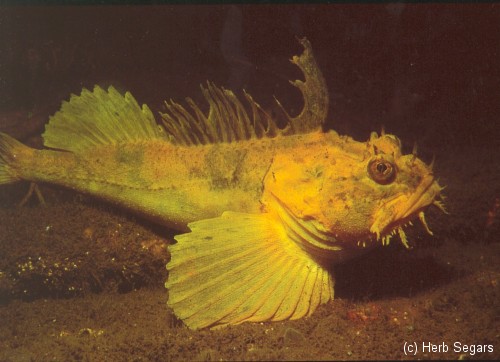Sea Raven

Hemitripterus americanus
Size
to 25" and 7 lbs.
Description:
The fleshy tabs around the head and ragged-looking dorsal fin are identifying characteristics of Scorpionfish like the Sea Raven. The eye is also very strange looking. These fishes prefer cooler waters and disappear when it warms up. Tropical and Pacific relatives including the introduced Lionfish have poisonous spines, but our species is harmless. Some people eat them, but I find them to be among the most interesting and obliging photo subjects in our waters.




Sea Ravens in several color morphs - red, yellow/brown, yellow, and almost black. Males adopt startling shades of yellow, orange, and red during mating season.


